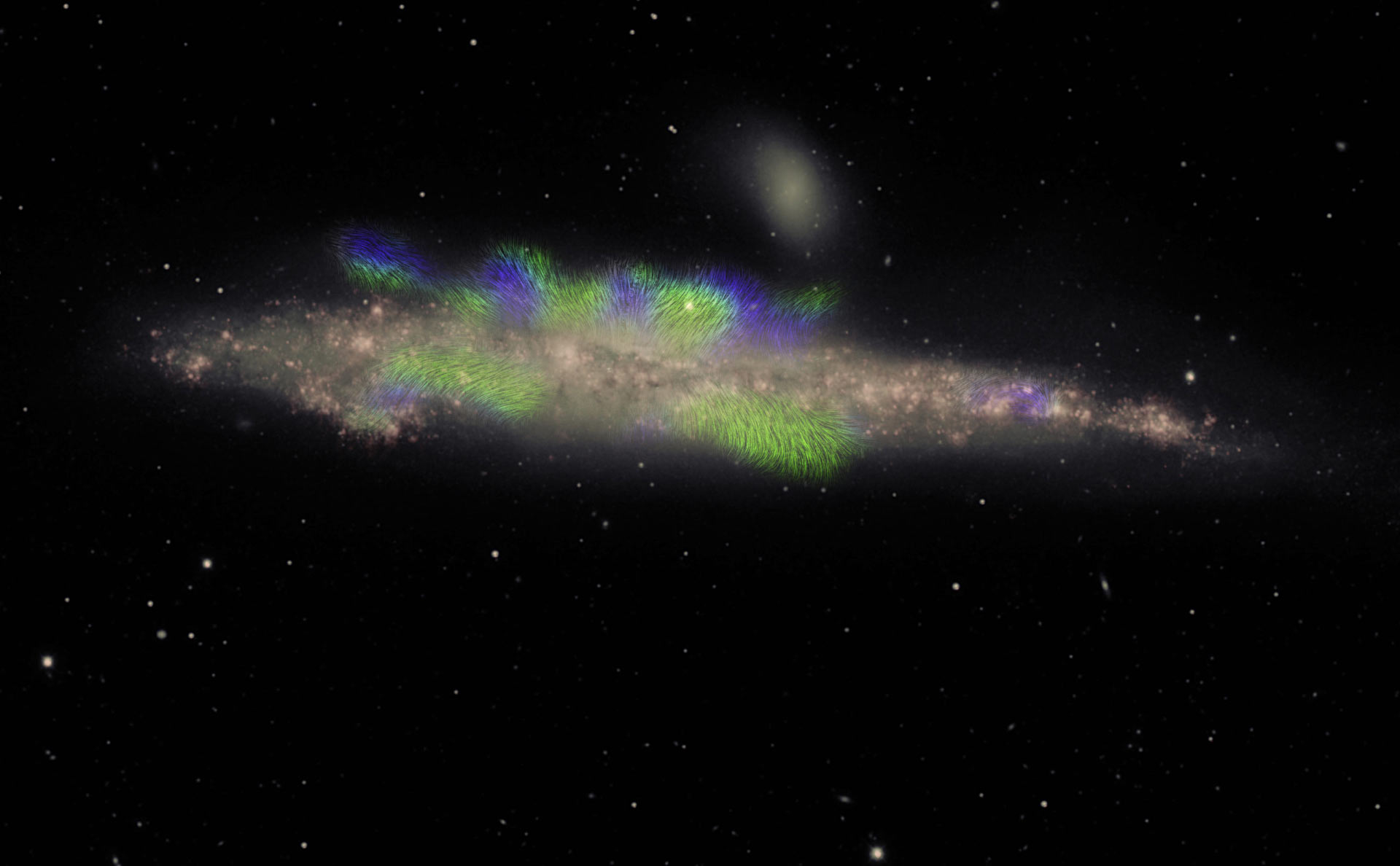
Astronomers are looking to a cosmic whale to learn about the magnetic fields which surround galaxies. The image above of NCG 4631, also known as the “Whale Galaxy,” was captured by the Very Large Array in New Mexico, and shows filaments of the magnetic field in green and blue, snaking out from the main body of the galaxy.
Researchers know that galaxies are surrounded by halos: areas of hot gas and dark matter which extends beyond the visible part of the galaxy. These halos have magnetic fields running through them which affect the passage of cosmic rays and influence star formation. But we don’t know much about the structure of these fields. That’s why the new findings in the Whale Galaxy are so useful, as it has one of the largest halos we’ve found in a galaxy observed from edge-on.
“This is the first time that we have clearly detected what astronomers call large-scale, coherent, magnetic fields far in the halo of a spiral galaxy, with the field lines aligned in the same direction over distances of a thousand light-years,” Dr. Marita Krause, an astronomer with the Max-Planck Institute for Radioastronomy, said in a statement. “We even see a regular pattern of this organized field changing direction.”
To detect the magnetic field of the galaxy, the researchers used the antenna array to locate naturally emitted radio waves. By using different configurations of the array, they were able to detect both the larger structures of the galaxy as well as the finer details like the filaments.
These findings could help to explain more about the relationship between the formation of galaxies and their magnetic fields, as the researchers explained: “Building such a picture can answer important questions such as how galaxies acquire magnetic fields, and whether all such fields are produced by a dynamo effect. Can these galaxy halo fields illuminate the mysterious origin of the even larger intergalactic magnetic fields that have been observed?”
The findings are published in two papers in the journals Astronomy & Astrophysics and the Monthly Notices of the Royal Astronomical Society.



